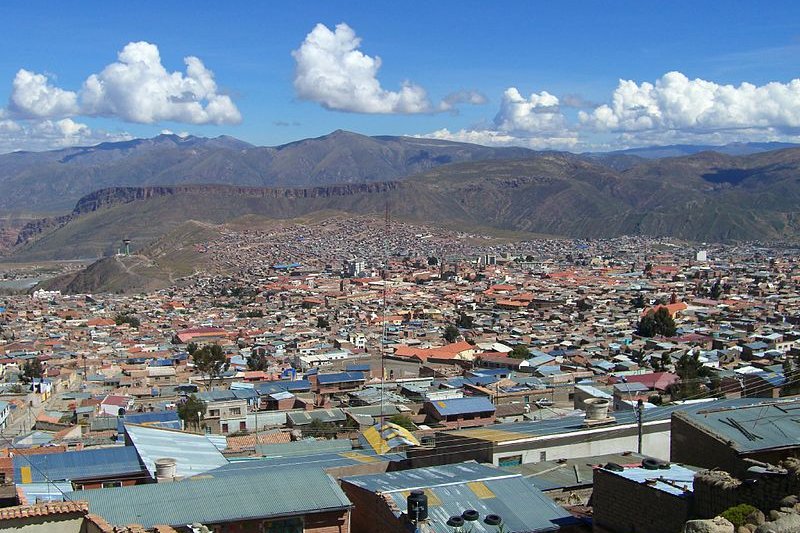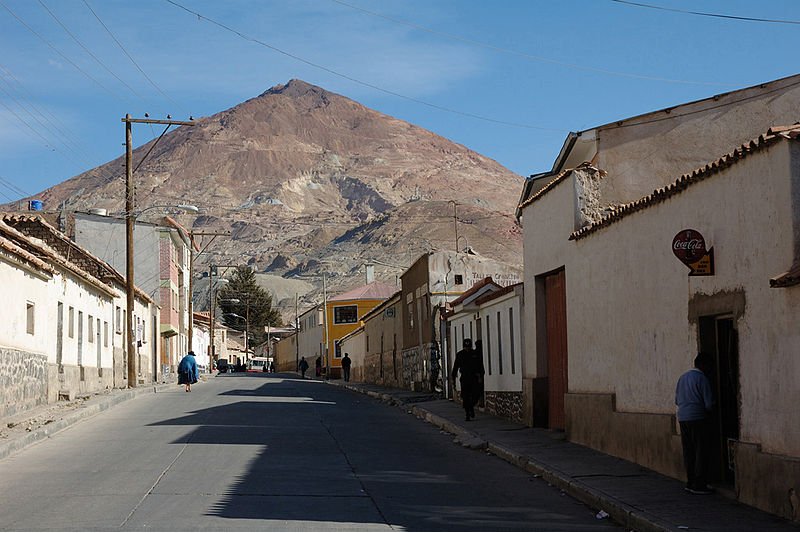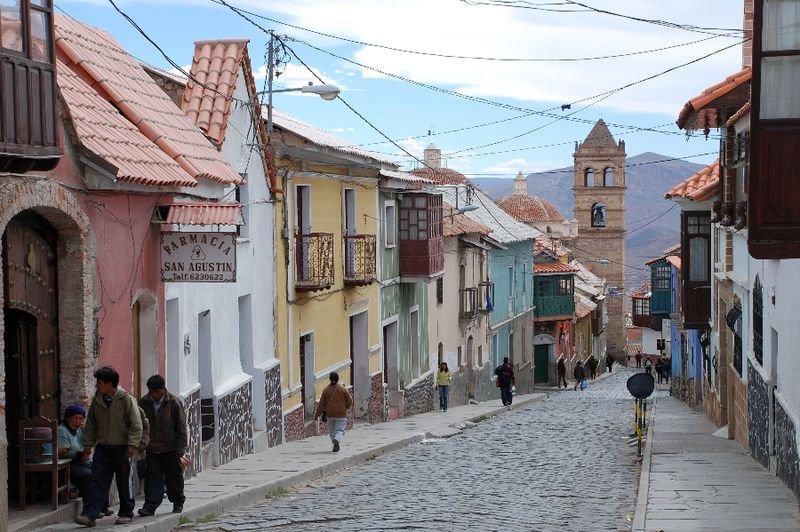 Potosí panorama
Potosí panoramaSource: https://commons.wikimedia.org/wiki/File:Panorama_de_la_Ciudad_de_Potos%C3%AD_Bolivia.jpg
Author: Joachim Pietsch

Potosí is a city in the southern part of Bolivia. Located at 4,090 m (13,420 ft) above sea level, it is the highest city in the world with a population exceeding 100,000. Potosí covers 118.2 sq km (45.6 mi) and has a population of 165,000 (2011 estimate).
 Potosí, Bolivia, with Cerro Rico in the background
Potosí, Bolivia, with Cerro Rico in the backgroundSource: https://commons.wikimedia.org/wiki/File:Cerro_Rico_Potosi_%28pixinn.net%29.jpg
Author: Christophe Meneboeuf

The city of Potosí is located in the shadows of Cerro de Potosí, a mountain that is also popularly called Cerro Rico, meaning "rich mountain". This is because of the rich silver deposit of the mountain and the surrounding areas. Potosí was founded in 1546 and because renowned throughout the Spanish World for the large wealth of silver that it produced. In Spanish very name Potosí connotes visions of extraordinary wealth. For this reason, many later cities that also produce silver were similarly given the name Potosí, among them San Luis Potosí in Mexico and Potosi in Nevada, United States.
By the beginning of the 19th century, the silver at San Luis Potosí had all been mined, and attention then turned to tin. The town went into a slow decline when tin too became exhausted.
 Street in Potosí
Street in PotosíSource: https://commons.wikimedia.org/wiki/File:Potosi_Street_Scene.jpg
Author: Sascha Grabow

Since 1987, the City of Potosí is recognized as a World Heritage Site for its outstanding universal value, for once being the biggest silver mine in the world, and for being the world's highest city.
Visiting Potosí
There are buses from Sucre (3 hours away), Oruro (6 hours), Uyuni (5-7 hours) and Tupiza (7-8 hours).Sights & Attractions in Potosí
- Casa Nacional de Moneda
Museum occupying a former mint. It displays a wide selection of artifacts, from religious art to items from the time it served as a mint. - Convento de Santa Teresa
A Carmelite convent and monastery now open to the public with regular tours.
 Latest updates on Penang Travel Tips
Latest updates on Penang Travel Tips

Copyright © 2003-2025 Timothy Tye. All Rights Reserved.

 Go Back
Go Back